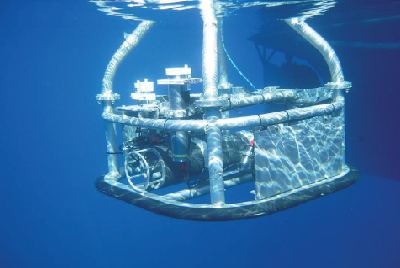Press Releases
Europe launches new coordinating body for open ocean observatories
European scientists are joining forces to better understand oceanic change across the geosphere, biosphere, and hydrosphere. Marking a major milestone, the first Assembly of Members meeting of the European Multidisciplinary Seafloor and water-column Observatory (EMSO) was held September 28-29th in Rome, Italy.
“It’s a well-accepted concept to have stations for observing weather and seismic activity on land, but our planet is mostly ocean. However, efforts to do this kind of work offshore have really matured over the last decade.”, says Professor Paolo Favali of the Istituto Nazionale di Geofisica e Vulcanologia in Rome.
EMSO is a distributed research infrastructure, composed of fixed-point open ocean observatory nodes, whose aim is to provide coherent long-term data sets for research and monitoring. The latest advancement is that EMSO is beginning a new level of organisation as a European Research Infrastructure Consortium (ERIC), a form of governance structure for such activities that allows for longer term strategic management of large scale efforts. The EMSO founding members, and therefore its Assembly of Members, include Italy, France, Greece, Ireland, Portugal, Romania, Spain and United Kingdom, and its coordination office is hosted in Rome.
“Society has an increasing need for improving the availability of high quality data to understanding climate change and geo-hazards. For example the oceans store large quantities of head and carbon dioxide, an important greenhouse gas.” says Dr. Henry Ruhl of the National Oceanography Centre, UK.
EMSO observation data is collected from the ocean’s surface, through the water column to sub-seafloor across geo-hazard, physical, biogeochemical and ecological themes, with various local emphases. EMSO is planning spans from polar to sub-tropical climatic zones and from the Atlantic to the Mediterranean, Sea of Marmara and Black Sea. This offers a broad spectrum of study areas across diverse environments. Critically, the systems can send data to land through seafloor telecommunication cables or satellite connections from surface buoys. Tests sites are also fundamental facilities for testing devices to be incorporated into EMSO nodes.
With observatory initiatives from Canada, USA, Japan, China, Taiwan and Australia, EMSO rides a global wave of understanding that ocean processes drive our planet. EMSO also represents a fundamental contribution to the long-term vision of the Global Ocean Observing System (GOOS). It will contribute direct oceanic observations for the EU Global Monitoring for Environment and Security Initiative, COPERNICUS, and is aligned with the challenges and key priorities of the EU Marine Strategy Framework Directive (MSFD). The data collected by EMSO will also support policy and legislation of organisations such as the Intergovernmental Panel on Climate Change (IPCC), the United Nations Environment Programme (UNEP) and the Group on Earth Observation (GEO), just to mention a few. Importantly, EMSO also joins with other ERIC efforts such as the Integrated Carbon Observing System (ICOS).
EMSO is forging ahead through the next challenge in Earth-Ocean Science: How to co-ordinate ocean data acquisition, analysis and response across provincial, national, regional, and global scales. It not only brings together countries and disciplines, but also allows the pooling of resources and coordination to assemble harmonised data into a comprehensive regional ocean picture which it then makes openly available to researchers and stakeholders worldwide.
Press release for the launch of EMSODEV project



